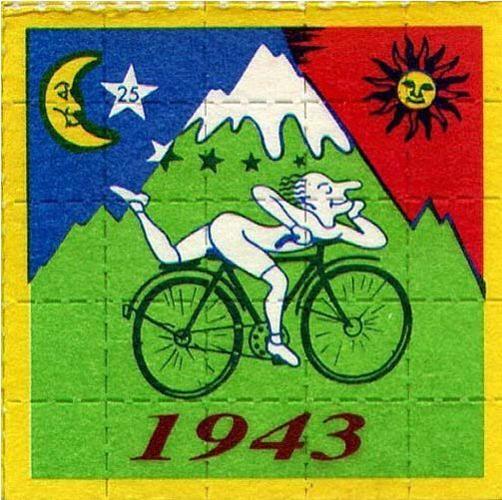The history of Bicycle Day
Bicycle Day, celebrated annually on April 19, marks the anniversary of the first intentional LSD trip taken by Swiss chemist Albert Hofmann in 1943. This day is not about cycling but commemorates a pivotal moment in the history of psychedelics.

Bicycle Day, celebrated annually on April 19, marks the anniversary of the first intentional LSD trip taken by Swiss chemist Albert Hofmann in 1943. This day is not about cycling but commemorates a pivotal moment in the history of psychedelics.
The Discovery of LSD
Albert Hofmann, working at Sandoz Laboratories in Basel, Switzerland, first synthesized lysergic acid diethylamide (LSD) in 1938 as part of a program searching for medically useful ergot alkaloid derivatives. However, the psychoactive properties of LSD were not immediately discovered. It wasn't until five years later, on April 16, 1943, that Hofmann decided to re-synthesize LSD because he felt a peculiar presentiment regarding the compound[1][2][3][4].
The First LSD Trip
Three days after re-synthesizing LSD, on April 19, 1943, Hofmann experienced strange sensations and decided to experiment on himself. He ingested 250 micrograms of LSD, significantly more than the threshold dose of 20 micrograms. What followed was a profound and unsettling experience as he rode his bicycle home. This journey is famously known as his "trip," during which he experienced intense and disturbing hallucinations but also moments of extraordinary visual and sensory perception[1][2][3][4].
The Impact and Legacy
Hofmann's discovery of LSD's effects was accidental, but it had a significant impact on the field of psychiatry and the emerging counterculture. Initially, LSD was used in various psychiatric research and therapy, exploring its potential for treating depression, anxiety, and addiction. The substance was legal in the 1950s and early 1960s and was extensively supplied to researchers and therapists[2][3][4].
The cultural impact of LSD grew in the 1960s, influencing music, art, and literature, and became a symbol of the counterculture movement. However, its widespread recreational use and association with the anti-establishment led to a crackdown. By the late 1960s, LSD was banned in many countries[2][3][4].
Commemoration of Bicycle Day
The first official celebration of Bicycle Day was organized by Thomas B. Roberts, a Professor at Northern Illinois University, in the 1980s. He chose April 19 to honor Hofmann's first intentional LSD trip. The day is now marked by psychedelic communities worldwide, often featuring educational events, art exhibitions, and discussions about the therapeutic and spiritual benefits of psychedelics[1][2][3].
Bicycle Day serves as a reminder of the complex history of one of the most influential and controversial discoveries in the history of science and culture. It highlights the potential of psychedelics to alter human consciousness and their impact on society, science, and spirituality[1][2][3][4].
Citations:
[1] https://en.wikipedia.org/wiki/Bicycle_Day
[2] https://www.daysoftheyear.com/days/bicycle-day/
[3] https://www.bicycling.com/culture/a39763696/bicycle-day-albert-hofmann-lsd-psychedelic/
[4] https://mikejay.net/bicycle-day-revisited/
[5] https://www.forbes.com/sites/andrewdeangelo/2023/04/11/bicycle-day-may-soon-overtake-cannabis-holiday-420/?sh=6f40c41857da
[6] https://www.uvic.ca/research/centres/cisur/assets/docs/iminds/bicycle-hdt.pdf
[7] https://blogs.scientificamerican.com/cross-check/tripping-in-lsds-birthplace-a-story-for-e2809cbicycle-daye2809d/
[8] https://www.forbes.com/sites/andrewdeangelo/2022/04/14/bicycle-day-honoring-the-onset-of-the-psychedelic-revolution-as-it-zooms-across-the-globe/?sh=40540d507a49